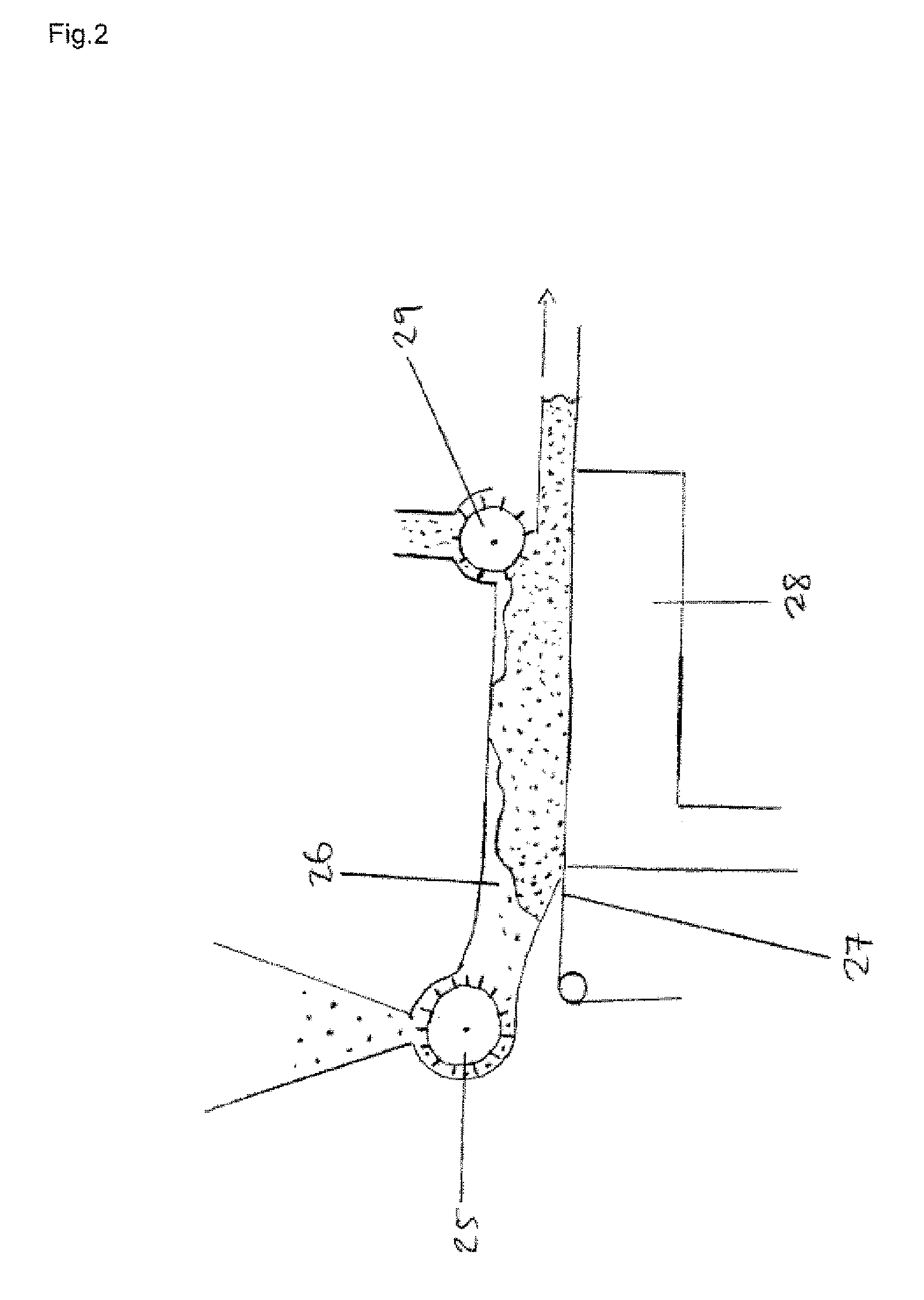Method for manufacturing a fibre-containing element and element produced by that method
- Summary
- Abstract
- Description
- Claims
- Application Information
AI Technical Summary
Benefits of technology
Problems solved by technology
Method used
Image
Examples
Embodiment Construction
[0142]Apparatus suitable for use in the method of the present invention can be seen in FIG. 1, where a fibre-forming apparatus and collector are configured to carry a mineral fibre web to the inlet duct 1, a binder supply means is positioned to supply binder to the mineral fibres to the inlet duct, the apparatus shown could also form part of the novel apparatus of the invention.
[0143]Supply means to supply second fibres (not shown) can also be provided to supply second fibres to the inlet duct 1. Filler supply means are also provided (not shown) to supply filler to, for instance, the inlet duct 1.
[0144]The apparatus comprises an inlet duct 1 for starting materials, e.g. binder, mineral fibres and filler and for specific raw materials the apparatus may comprise a shredder (not shown) at the inlet duct 1 to at least partly cut up bulky material. At the lower edge of the inlet duct, there is a conveyor 2 that carries the starting materials through the inlet duct 1. At the upper edge of...
PUM
| Property | Measurement | Unit |
|---|---|---|
| Length | aaaaa | aaaaa |
| Length | aaaaa | aaaaa |
| Length | aaaaa | aaaaa |
Abstract
Description
Claims
Application Information
 Login to View More
Login to View More - R&D
- Intellectual Property
- Life Sciences
- Materials
- Tech Scout
- Unparalleled Data Quality
- Higher Quality Content
- 60% Fewer Hallucinations
Browse by: Latest US Patents, China's latest patents, Technical Efficacy Thesaurus, Application Domain, Technology Topic, Popular Technical Reports.
© 2025 PatSnap. All rights reserved.Legal|Privacy policy|Modern Slavery Act Transparency Statement|Sitemap|About US| Contact US: help@patsnap.com


